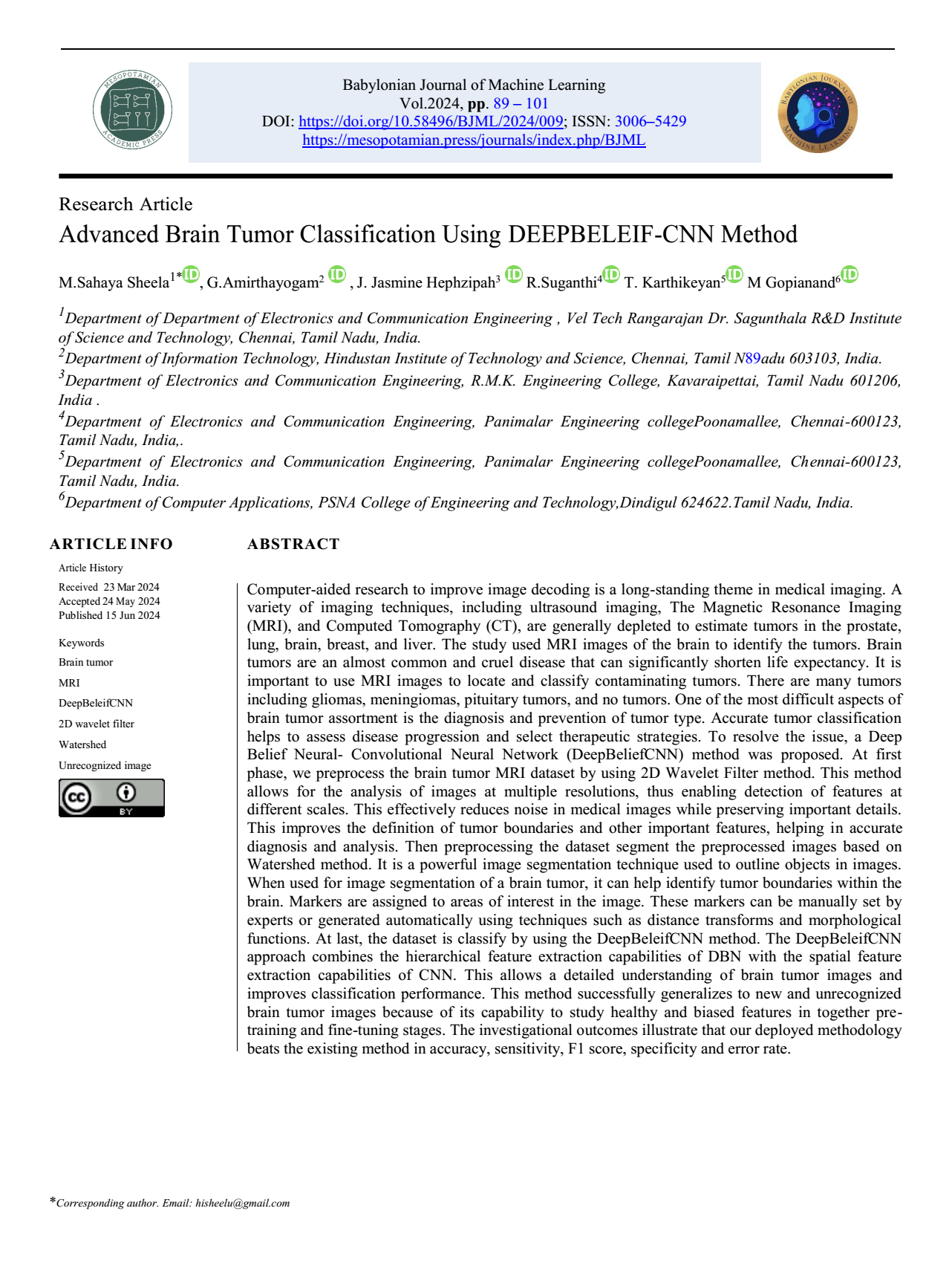Advanced Brain Tumor Classification Using DEEPBELEIF-CNN Method
Main Article Content
Abstract
Computer-aided research to improve image decoding is a long-standing theme in medical imaging. A variety of imaging techniques, including ultrasound imaging, The Magnetic Resonance Imaging (MRI), and Computed Tomography (CT), are generally depleted to estimate tumors in the prostate, lung, brain, breast, and liver. The study used MRI images of the brain to identify the tumors. Brain tumors are an almost common and cruel disease that can significantly shorten life expectancy. It is important to use MRI images to locate and classify contaminating tumors. There are many tumors including gliomas, meningiomas, pituitary tumors, and no tumors. One of the most difficult aspects of brain tumor assortment is the diagnosis and prevention of tumor type. Accurate tumor classification helps to assess disease progression and select therapeutic strategies. To resolve the issue, a Deep Belief Neural- Convolutional Neural Network (DeepBeliefCNN) method was proposed. At first phase, we preprocess the brain tumor MRI dataset by using 2D Wavelet Filter method. This method allows for the analysis of images at multiple resolutions, thus enabling detection of features at different scales. This effectively reduces noise in medical images while preserving important details. This improves the definition of tumor boundaries and other important features, helping in accurate diagnosis and analysis. Then preprocessing the dataset segment the preprocessed images based on Watershed method. It is a powerful image segmentation technique used to outline objects in images. When used for image segmentation of a brain tumor, it can help identify tumor boundaries within the brain. Markers are assigned to areas of interest in the image. These markers can be manually set by experts or generated automatically using techniques such as distance transforms and morphological functions. At last, the dataset is classify by using the DeepBeleifCNN method. The DeepBeleifCNN approach combines the hierarchical feature extraction capabilities of DBN with the spatial feature extraction capabilities of CNN. This allows a detailed understanding of brain tumor images and improves classification performance. This method successfully generalizes to new and unrecognized brain tumor images because of its capability to study healthy and biased features in together pre-training and fine-tuning stages. The investigational outcomes illustrate that our deployed methodology beats the existing method in accuracy, sensitivity, F1 score, specificity and error rate.
Article Details
Issue
Section

This work is licensed under a Creative Commons Attribution 4.0 International License.
Deprecated: json_decode(): Passing null to parameter #1 ($json) of type string is deprecated in /home/u273879158/domains/mesopotamian.press/public_html/journals/plugins/generic/citations/CitationsPlugin.php on line 68
